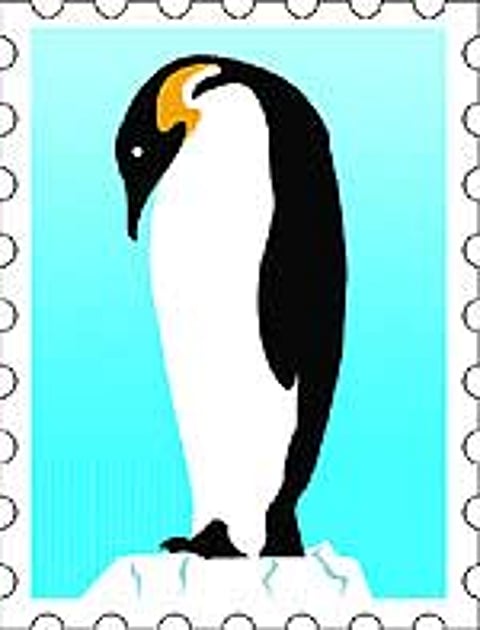Off the Map
Antarctica Diary
The older the ice, the bluer it gets—the barman in the lounge would remind us that the ice in our drinks was several thousand years old.

India is probably the only country that has moved from the southern to northern hemisphere. It broke off from the continent of Gondwanaland, along with its geological cousins Madagascar and Australia, about 120 million years ago, and drifted north to collide with the Asian plate about 80 million years later. Fossils tell us that Gondwanaland was hot and humid in those days, nothing like the icy, windswept wastes of the Antarctic today, but it still felt like a homecoming.
We set off from Ushuaia, on the Beagle Channel (of Darwin fame) at the very southern tip of Argentina (the “end of the world” as every bar in town reminds you—so why not have another drink) in a former Soviet ice-breaker, refitted for tourism in Yugoslavia, registered in Malta, and leased out to a very outdoorsy American company based in Seattle. The Lyubov Orlova (named after a Soviet actress) was an ‘expedition’ and not a cruise ship, our American operators kept telling us, because the emphasis of the ten-day trip was to be on activities and not on luxury (although the food was excellent—the crew was Russian, but the cooks were international). Our destination was the Antarctic peninsula.
After a rather rough 72 hours crossing the notorious Drake Passage, during which time the expedition staff tried, unsuccessfully, to distract us from seasickness with lectures on penguins, seals, whales, geology and the ‘heroic age’ (of Antarctic exploration), the engines finally purred to a halt, and we awoke to balmy blue skies and a seascape as calm as a lake, protected by the islands running down the side of the peninsula. Only the seabirds punctured the silence. The deck cranes were already busy lowering the Zodiacs—which are flat bottomed rubber boats filled with air in separate compartments so that if one compartment gets punctured by an iceberg, you stay afloat. That first morning, our Zodiacs sped off to a bay known as the ‘graveyard of icebergs’. The icebergs get stuck there and spend the rest of their considerable lives melting down into weird and beautiful shapes. Some of the ice sculptures towered over us, others had icy blue caverns the boats could enter. The older the ice, the bluer it gets—the barman in the lounge would remind us that the ice in our drinks was several thousand years old.
Flipper Flipped
Closer to the shore, we could see where the icebergs came from. At one point, the glacier slipping down the slope behind it had formed a huge arch near the shoreline, several times bigger than India Gate. But cracks were appearing in it, and I thought it was brave of our kayakers to be paddling so close to it. “Don’t worry,” said our Zodiac driver, “it will take another few years to calve, but it will make quite a splash when it does.” We landed on a stretch of rocky shoreline which global warming had left exposed, and the expedition staff counted us extremely carefully as we jumped off the boats and waddled off in the snow, much like the penguins we had come to visit.
They were definitely the star attraction. This early in the summer (early December), some of the males had still not found partners, and would suddenly emit a piercing and tremulously plaintive call, necks stretched to the sky and flippers flapping in what is called an ‘ecstatic display’, inviting any unattached female to come and inspect their beautiful pebble nest. Others, who had paired up, were engaged with their mates in elaborate courtship displays. Actual conjugation takes a second and has been called a ‘cloacal kiss’. Males continue adding to the pebbles while the female sits on the egg, although females sometimes take a break and go off diving for fish, and the males take over. Off duty, some of the penguins amused themselves by walking up to and teasing the leopard seals, who can barely move on land, but are their deadly predators in the water.
No Man’s Land
We visited a disused Argentinian research station, its empty huts painted cherry red. India’s research station lies south of this. Seven countries have laid claims to the Antarctic, based on discovery, occupation or contiguity, dividing the map of the huge continent (3,000 miles across, most of it 10,000 meter high) into wedge shaped slices of a pie converging on the South Pole. Several of the wedges overlap. Fortunately, the 45 signatories to the Antarctic treaty signed in 1949 have agreed to hold their claims, if any, in abeyance indefinitely, open the continent to scientific research by all signatories, ban military installations, and prohibit exploration for minerals. So you don’t need a passport to go to Antarctica. It belongs to all of us.
Pebble Thief
Penguins can be pretty human. One of them figured out it was easier to steal pebbles from his neighbour’s nest than go looking for them. I watched him wander off and make a wide arc before stealing up to his neighbour’s nest and picking up a pebble, only to get noticed amid loud squawks of protests, and having to drop it, looking extremely sheepish.